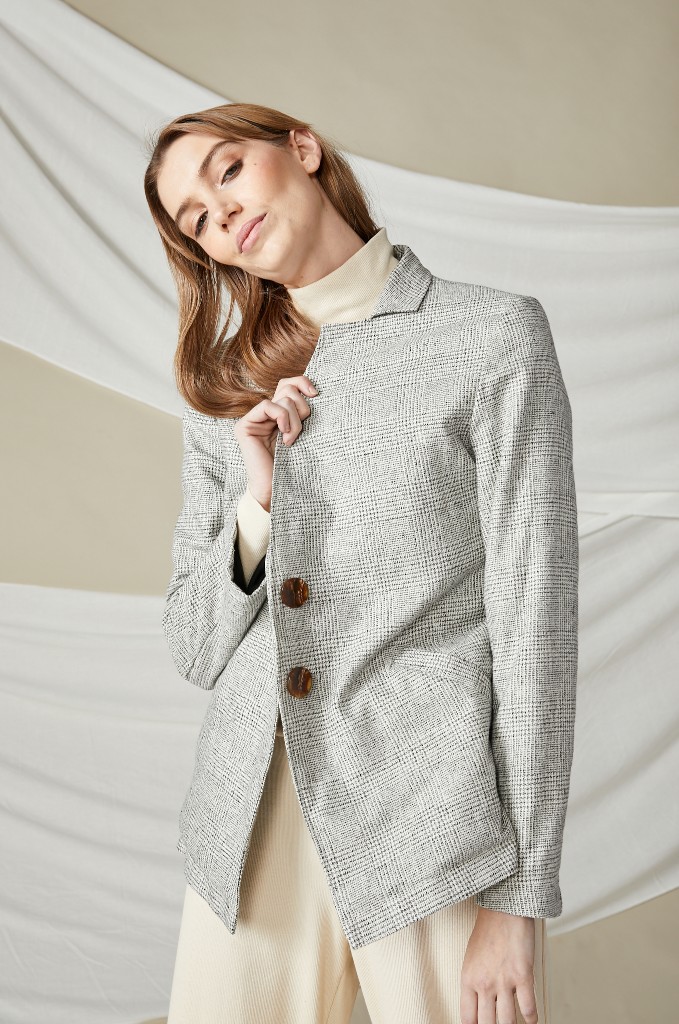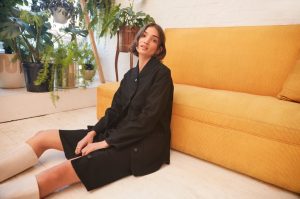Update: Lois Hazel has sadly stopped trading as of late 2022.
Lois McGruer-Fraser is talking to me over the phone from her Melbourne studio while ironing fabrics and directing a seamstress at the same time. Everything I imagined the life of a designer to be.
But that life could have quite easily never happened for Lois.
Fashion design – and all that her couture has become – was destined to remain trapped in the art world, where the designer felt her creative path truly belonged.
It wasn’t until a friend asked her to join a fashion course that she found her skills transferred perfectly to couture.
She started studying a Bachelor of Design/Fashion at RMIT – something she explains happened organically.
Post-degree Lois decided to take her skills on tour. She spent the following years studying and interning in fashion houses, large and small, in Paris, New York and Amsterdam.
When she returned to Australia in 2014 the idea of starting her own label became a possibility.
“Nothing was happening in the industry that excited me,” Lois says. “I didn’t want to sit behind a desk all day doing tech sheets. I wanted to be creative. So that’s when I decided to start Lois Hazel.”

Lois’s self-titled label is influenced by her own style, natural fibres and living in comfort.
“From the get-go I wanted to create pieces that could be worn every single day, and be with the customer from morning to evening,” Lois says.
“For me, it’s like I want to wake up in the morning, pull out the first thing I see, chuck it on with some shoes, walk out the door and feel comfortable.”
This mentality is clear in the Lois Hazel collections – an essence of simplicity while still being unique and extremely wearable.
Another thing that was important for Lois in her collections was ethical labour. She wanted to ensure that the people who worked for the label were paid a fair wage.
For this reason, she decided her collections would be made in Australia.
“Producing locally meant that I could have a relationship with the factories that I worked with and that I could engage local seamstresses,” she says.
An added benefit to keeping production local was the ability to reduce the brand’s environmental footprint.
Having your production house down the road cuts down a lot of transport and emissions that most brands are slumped with. The average item in a person’s wardrobe has travelled through up to 10 different countries before it’s purchased.

Another way Lois looks to reduce the brand’s footprint is by avoiding waste and plastics in their production.
“For our packaging we use recycled cardboard boxes, and the garments are wrapped in recycled wrapping paper or recycled tissue paper, and the box is taped closed with paper tape,” she says.
“We also keep all of our fabric offcuts and send them to brands and partners to use in their products.”
As the Lois Hazel label has grown, the designer says her own values have evolved, and she now has more of a focus on investing in better quality fabrics and using deadstocks and organics.
“At the start I was using a lot of silks and buying them from whatever supplier I could get, whatever fabrics took my fancy,” she says.
“But then I delved more into the fashion world even further and found out the nitty gritty and the negative of this industry.”
These days natural fibres are a minimum requirement for the Lois Hazel collections, and on top of that the designer looks for organic fibres that are traceable, ethically sourced, sustainably produced or deadstock.
“This season we’ve got a really beautiful GOTS certified ribbing in all our jerseys, which is knitted in Melbourne.”
“Even the dyes they use for the fabric are environmentally friendly.”
To make the brand even more sustainable Lois says they’re hoping to change their threads to a Tencel thread so that the clothes are biodegradable at the end of their life.
It’s all a work in progress, as most things in life are.



